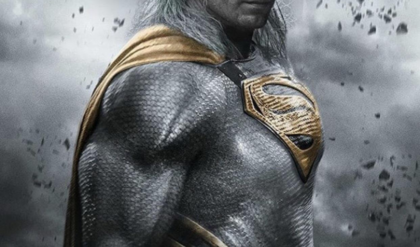BALTIMORE — Crews set off a chain of carefully placed explosives Monday to break down the largest remaining span of the collapsed Francis Scott Key Bridge in Baltimore, and with a boom and a splash, the mangled steel trusses came crashing down into the river below.
The explosives flashed orange and let off plumes of black smoke upon detonation.
The longest trusses toppled away from the grounded Dali container ship and slid off its bow, sending a wall of water splashing back toward the ship.
It marked a major step in freeing the Dali, which has been stuck among the wreckage since it lost power and crashed into one of the bridge’s support columns shortly after leaving Baltimore on March 26.

Explosive charges are detonated to bring down sections of the collapsed Francis Scott Key Bridge resting on the container ship Dali on Monday, May 13, 2024.
In a tragic incident, the collapse of a structure at Baltimore’s busy port resulted in the deaths of six construction workers and brought maritime traffic to a standstill. The controlled demolition of the wreckage was successfully carried out, allowing for the next steps in the cleanup process and paving the way for the resumption of port activities.
The collapse had a significant impact on the local economy, halting operations and affecting thousands of longshoremen, truckers, and small business owners dependent on the port’s functionality. With the demolition completed, officials are now focused on assessing the remaining trusses on the bow of the Dali and ensuring no underwater debris is obstructing the refloating and relocation of the ship.
The successful detonation marks a critical milestone in restoring the port’s operations and providing relief to the affected workers and businesses. The assessment of the wreckage and the subsequent refloating of the Dali are the next crucial steps in the dynamic cleanup process, aimed at restoring normalcy and preventing further economic disruption.

The detonation of the largest remaining span of the collapsed Francis Scott Key Bridge drew in a crowd of dozens.AP
“It’s a lot like peeling back an onion,” said Lt. Gen. Scott Spellmon of the U.S. Army Corps of Engineers.
Officials expect to refloat the ship within the next few days. Then three or four tugboats will guide it to a nearby terminal at the port. It will likely remain there for a several weeks and undergo temporary repairs before being moved to a shipyard for more substantial repairs.
“This was a very big milestone for our progression forward,” Col. Estee Pinchasin, Baltimore District Commander for the Army Corps of Engineers, said in the immediate aftermath of the demolition. She said crews don’t anticipate having to use any more explosives.

The controlled demolition will allow the Dali to be refloated and restore traffic through the port, which will provide relief for thousands of longshoremen, truckers and small business owners.AP
During the controlled demolition at the Port of Baltimore, the crew of the Dali remained on board without any reported injuries or issues, according to Capt. David O’Connell, commander of the port. The crew, consisting of 20 members from India and one from Sri Lanka, has been confined to the grounded vessel since the incident. They have been occupied with maintaining the ship and assisting in the ongoing investigation.
The demolition process, which involved weeks of meticulous preparation by engineers, aimed to break down a span estimated to be 500 feet long and weighing up to 600 tons. Originally scheduled for Sunday, the demolition was postponed due to thunderstorms, but it has now been successfully completed. This critical step allows the next phase of the cleanup process to begin, ensuring the ship can be refloated and maritime traffic through the port can be restored.

the next step in the dynamic cleanup process is to assess the few remaining trusses on the Dali’s bow.AP
“This is a best practice,” Gov. Wes Moore said at a news conference Monday, noting that there have been no injuries during the cleanup to date. “Safety in this operation is our top priority.”
Fire teams were stationed in the area during the explosion in case of any problematic flying sparks, officials said.
In a videographic released this week, authorities said engineers were using precision cuts to control how the trusses break down. They said the method allows for “surgical precision” and is one of the safest and most efficient ways to remove steel under a high level of tension. Hydraulic grabbers will now lift the broken sections of steel onto barges.
The National Transportation Safety Board and the FBI are conducting investigations into the bridge collapse. Officials have said the safety board investigation will focus on the ship’s electrical system.

The Dali’s crew members haven’t been allowed to leave the grounded vessel since the disaster and were aboard during demolition.ZUMAPRESS.com
Danish shipping giant Maersk had chartered the Dali for a planned voyage from Baltimore to Sri Lanka. However, the journey was abruptly halted when the ship experienced a power failure and lost control of its steering system, leading to a mayday call from the crew. Minutes later, the Dali collided with a bridge, resulting in a tragic accident.
State and federal officials have praised the efforts of the salvage crews and other members of the cleanup operation, who played crucial roles in recovering the remains of the six construction workers who perished in the incident. The final body was retrieved from the underwater wreckage last week. All six victims were Latino immigrants who had come to the United States seeking job opportunities. They were working an overnight shift, filling potholes, when the bridge was destroyed by the impact of the collision.
The controlled demolition of the bridge span has now allowed for the next steps in the dynamic cleanup process. With the wreckage being assessed to ensure it does not obstruct the ship’s refloating, efforts are underway to restore maritime traffic through the port. This will provide much-needed relief for thousands of longshoremen, truckers, and small business owners whose livelihoods have been affected by the port closure.

The Baltimore Key Bridge collapse killed six construction workers.Getty Images
Officials said the operation remains on track to reopen the port’s 50-foot deep draft channel by the end of May. Until then, crews have established a temporary channel that’s slightly shallower. Officials said 365 commercial vessels have passed through the port in recent weeks. The port normally processes more cars and farm equipment than any other in the country.
Former House Speaker Nancy Pelosi, a Baltimore native whose father and brother served as mayor decades ago, compared the Key Bridge disaster to the overnight bombardment of Baltimore’s Fort McHenry, which long ago inspired Francis Scott Key to write “The Star-Spangled Banner” during the War of 1812. She said both are a testament to Maryland’s resilience.
Pelosi, a Democrat who represents California’s 11th district, attended Monday’s news conference with two of her relatives. She praised the collective response to the tragedy as various government agencies have come together, working quickly without sacrificing safety.
“Proof through the night that our flag was still there,” she said. “That’s Baltimore strong.”
News
Henry Cavill’s Witcher & Superman Replacement Already Avoided The Mistake That Killed The Original Franchise – S
Henry Cavill already has a replacement for The Witcher and Superman thanks to his role in the Highlander reboot, and this is already avoiding the mistake that killed the original franchise. Henry Cavill is one of the most popular action stars thanks to his roles in movies…
Goodbye DC and Superman, Henry Cavill reveals his favorite role if he joins MCU – S
Henry Cavill has expressed his favorite role if he has the opportunity to collaborate with Marvel Studios. Henry Cavill has officially said goodbye to the role of Superman after the DCEU ends at the end of 2023 to open a…
Kim Kardashian Goes Into Hiding After Freak0ff Video Of Her And Diddy Gets Leaked Ok, so things just got a whole lot messier for Diddy. The world witnessed him in his true form as a video of him putting his hands on Cassie made rounds on the internet. – S
It made a lot of folks hella uncomfortable. But as Diddy’s future started to look grim, he thought of a strategy. What’s worse than Diddy being exposed for his crimes? Fans discovering names of beloved celebrities who knew about…
Chris Brown LEAKS The List Of Major Names INVOLVED in Diddy’s Ab*se! | DIDDY IS DONE! – S
**Diddy’s Troubles: Allegations and Revelations** Sean “Diddy” Combs, the music mogul behind Bad Boy Records, finds himself embroiled in a storm of controversies and allegations that threaten to tarnish his reputation irreparably. The latest revelations, sparked by comments from…
HOT NEWS: The Feds LEAK New EVIDENCE of Jay Z P!MPING Beyonce To Diddy?!? – S
The Feds LEAK New EVIDENCE of Jay Z P!MPING Beyonce To Diddy?!? Amidst the swirling vortex of celebrity gossip and scandal, a bombshell revelation has sent shockwaves rippling through the entertainment industry. The latest development involves none…
Kanye Leaks Footage Of Drake Getting Clapped By Lucian Grainge – S
Kanye Leaks Footage Of Drake Getting Clapped By Lucian Grainge Girl, Kanye is back at exp0sing shady celebs, and y’all know that whenever Drake spills the tea, he ALWAYS comes correct with the tea. He has a track history…
End of content
No more pages to load











